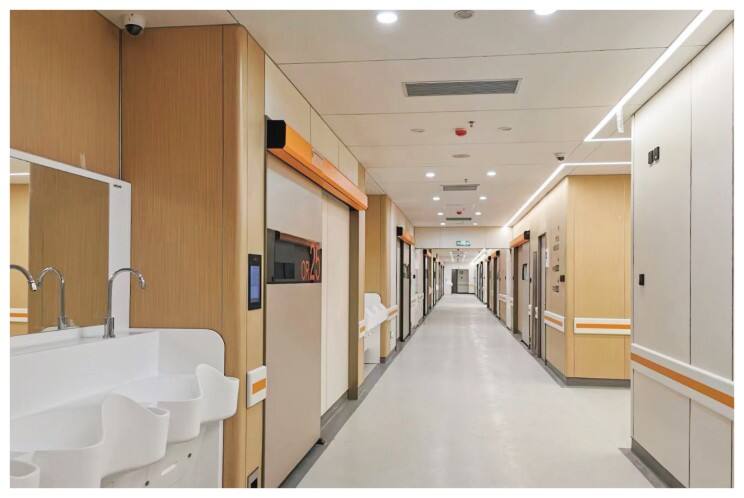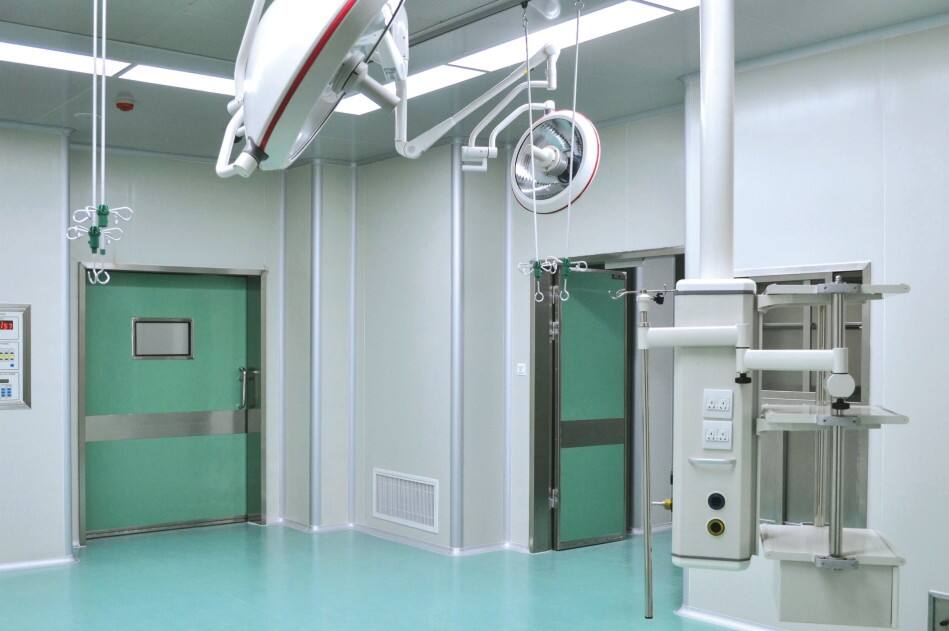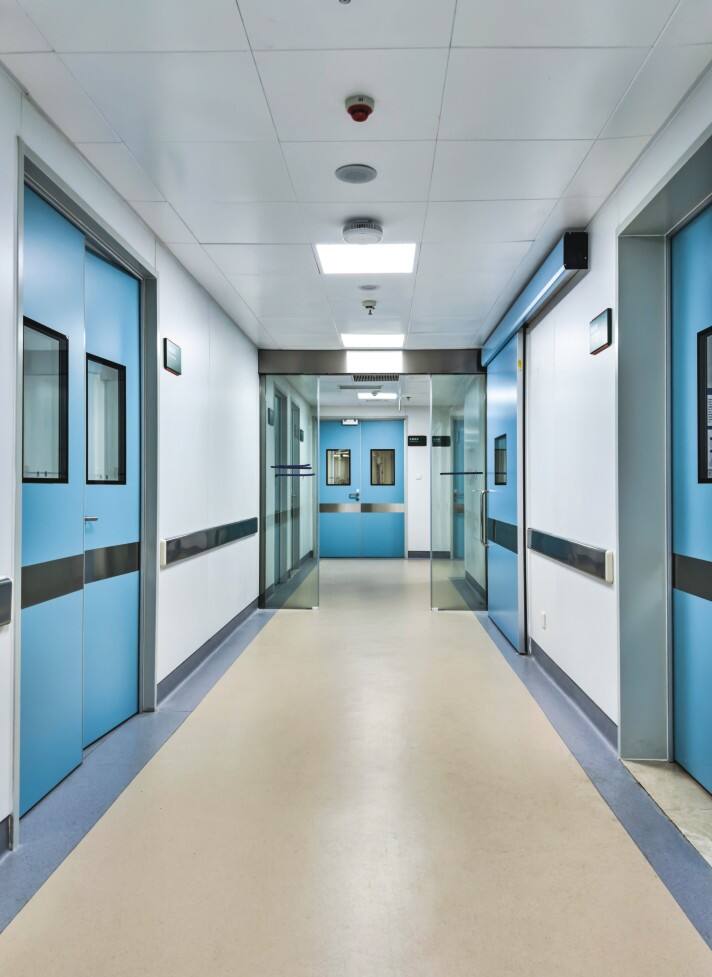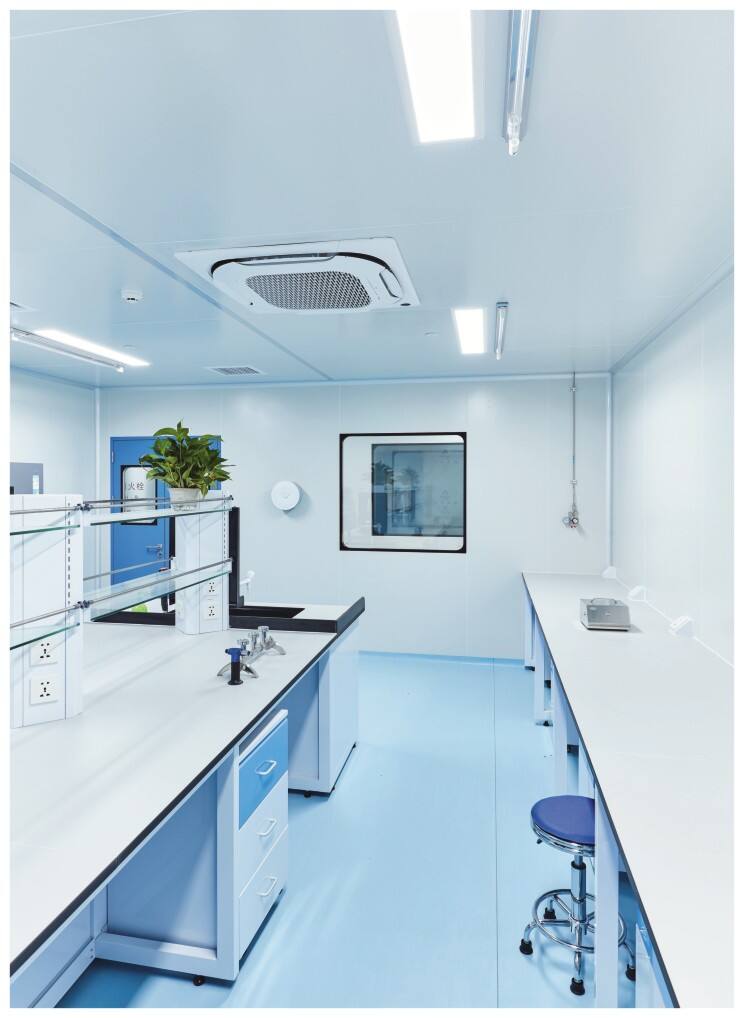1. Components of Prefabricated Cleanroom Engineering
Prefabricated cleanroom engineering primarily consists of three parts:
-
Enclosure Structure: Typically a space formed by airtight sealed walls and ceilings with assembled aluminum alloy frames and composite panels, along with conductive floor coverings.
-
Purification System: The air purification treatment system, comprising purification air supply units, purification air handling units, supply and return air ducts, and air conditioning systems.
-
Auxiliary Facilities: These vary depending on the cleanroom type and mainly include:
-
Electrically operated airtight doors
-
Embedded stainless steel instrument cabinets
-
Embedded film viewers
-
Embedded warming and cooling cabinets
-
Embedded control panels
-
Medical gas outlets
-
Embedded power supply modules
-
Related control systems and supporting software
Basic facilities for clean operating rooms also include:
-
Ceiling-mounted booms
-
Shadowless lamps
-
Operating tables
-
Anesthetic gas scavenging systems
-
Warming and cooling cabinets
-
Leakage current detection protection devices
-
Weak current systems such as call and intercom systems, background music
-
Multimedia systems
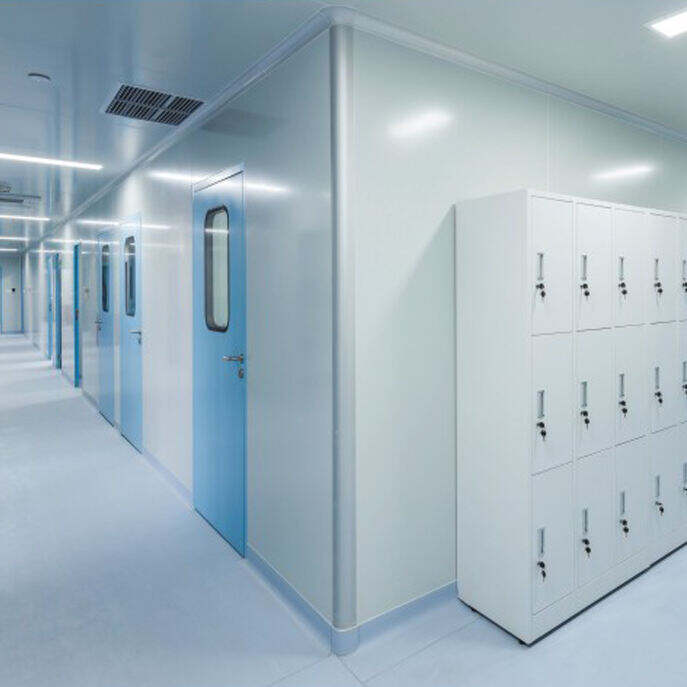
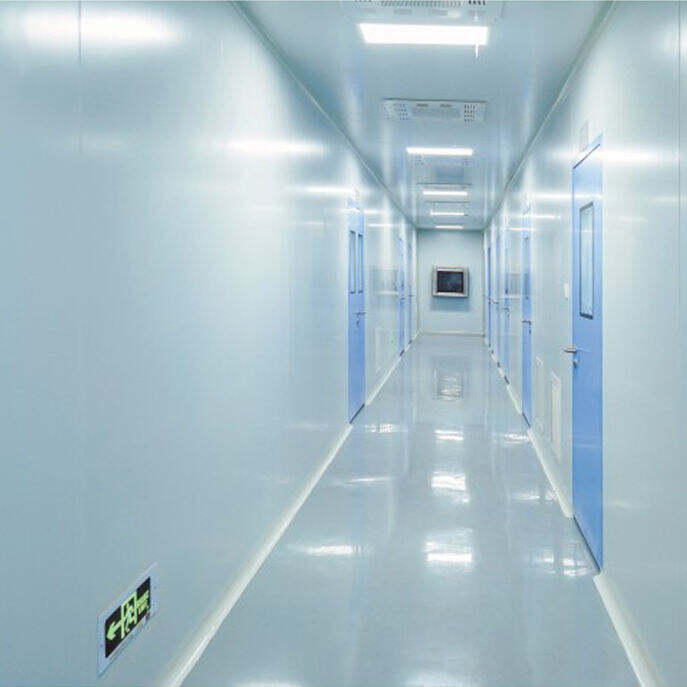
2. Technical Requirements for Prefabricated Cleanroom Engineering
Components and facilities for prefabricated cleanroom engineering must not only meet the basic technical requirements of the clean space but also comply with the following:
-
Frame requirements for the enclosure structure
-
Panel requirements for the enclosure structure
-
Requirements for connectors and adapters
-
Requirements for sealing elements
Components and facilities should:
-
Meet the medical process requirements of functional areas and achieve intended functions
-
Comply with relevant technical standards and acceptance criteria for cleanroom engineering
-
Allow flexible adjustment of auxiliary device positions (e.g., air outlets, gas panels, electrical interfaces, cabinets) based on user requirements
-
Feature standardized, modular, integrated, and unified designs for enclosure structures and auxiliary facilities, with diversified and flexible component specifications
-
Be factory-produced and assembled on-site, using custom frames as support to assemble composite panels and related devices into ceilings, walls, floors, etc., forming self-contained, adjustable, and dismountable enclosure structures
Frames should be preformed and productized, allowing flexible assembly. Frame deformation must comply with national standards, ensuring sufficient strength and rigidity, with surface treatments meeting relevant requirements.
Enclosure composite panels should meet the requirements of GB/T 29468, "Technical Guide for Application of Sandwich Panels in Cleanrooms and Associated Controlled Environments." Base plates should be metal or resin panels, with substrates made of non-combustible materials rated Class A. When used for exterior walls or ceilings, surfaces should avoid cold bridging and condensation. They should adapt to special requirements such as radiation protection and electromagnetic shielding, with enclosure modules custom-preformed accordingly.
Adapters and connectors for enclosure structures must ensure sufficient reliability and load-bearing capacity. Junctions between walls and ceilings, walls and walls, and ceilings and ceilings should have合理的 structures to ensure sealing and prevent cracking. They should be easy to disassemble and restore for cleaning, inspection, and testing. All detachable connectors should be easily manually connected and fastened after disassembly.
Seams are typically sealed with embedded materials. Sealants should have a smoke toxicity safety rating not lower than ZA2 as specified in GB/T 20285-2006, "Toxicity Classification of Smoke from Materials." They should be self-extinguishing, with self-extinguishing time ≤5 seconds. Gaps between enclosure structures and interfaces for pipelines and wiring penetrating the enclosure should be sealed. Sealing between doors and door frames, cabinets, and control composite panels should comply with GB 50591, "Code for Construction and Acceptance of Cleanrooms." Sealant tolerances should be ±0.3 mm, with shrinkage rate ≤0.5%, and should possess elastic recovery capability.
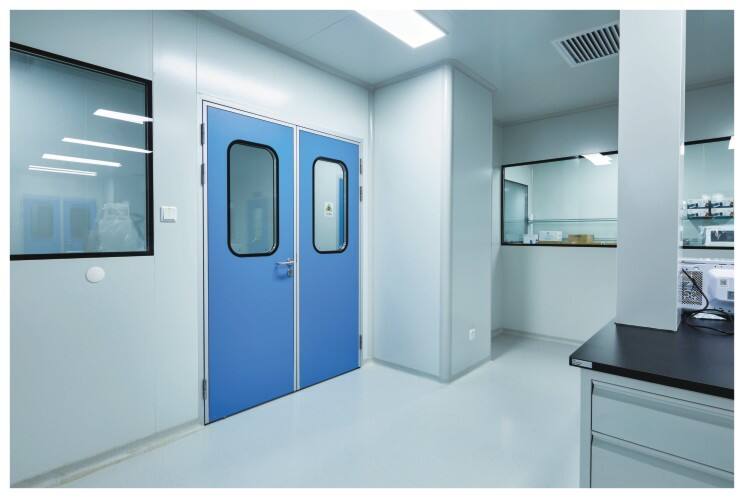
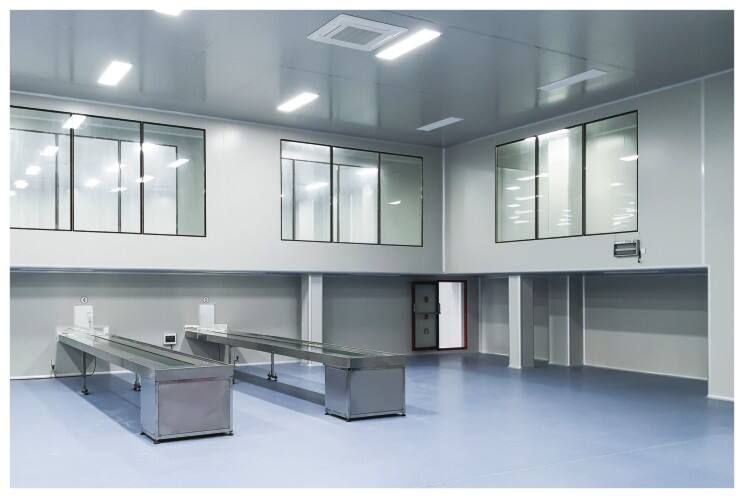
3. Challenges in Prefabricated Cleanroom Construction
The challenges of prefabricated clean operating rooms include:
-
High initial investment: High-quality aluminum profiles, FFUs (Fan Filter Units), and sealing systems are costly, especially for large-area projects where cost advantages are less apparent.
-
Dependence on supplier expertise: Design and construction require integration, demanding suppliers with medical purification experience. Otherwise, issues like inadequate airtightness or improper airflow organization may arise.
-
Customization needs: Hospital requirements vary, making full standardization difficult. Suppliers must be capable of flexible adjustments.
-
Transportation and on-site installation challenges: Large-sized components face transport limitations. Some modules (e.g., integrated plenum boxes) require segmented transport and on-site拼接, increasing installation complexity.
-
High on-site precision requirements: Strict control over floor flatness, wall verticality, etc., is essential to avoid compromising airtightness and cleanliness.
-
Maintenance needs: Bolts and sealants may age over time, requiring regular maintenance.
-
Future upgrades: Assessing whether existing structures support higher cleanliness standards (e.g., from Class 10,000 to Class 100) during future upgrades.
-
Evolving regulations: While GB 50591 covers some prefabrication requirements, specialized standards for medical cleanrooms仍需细化.
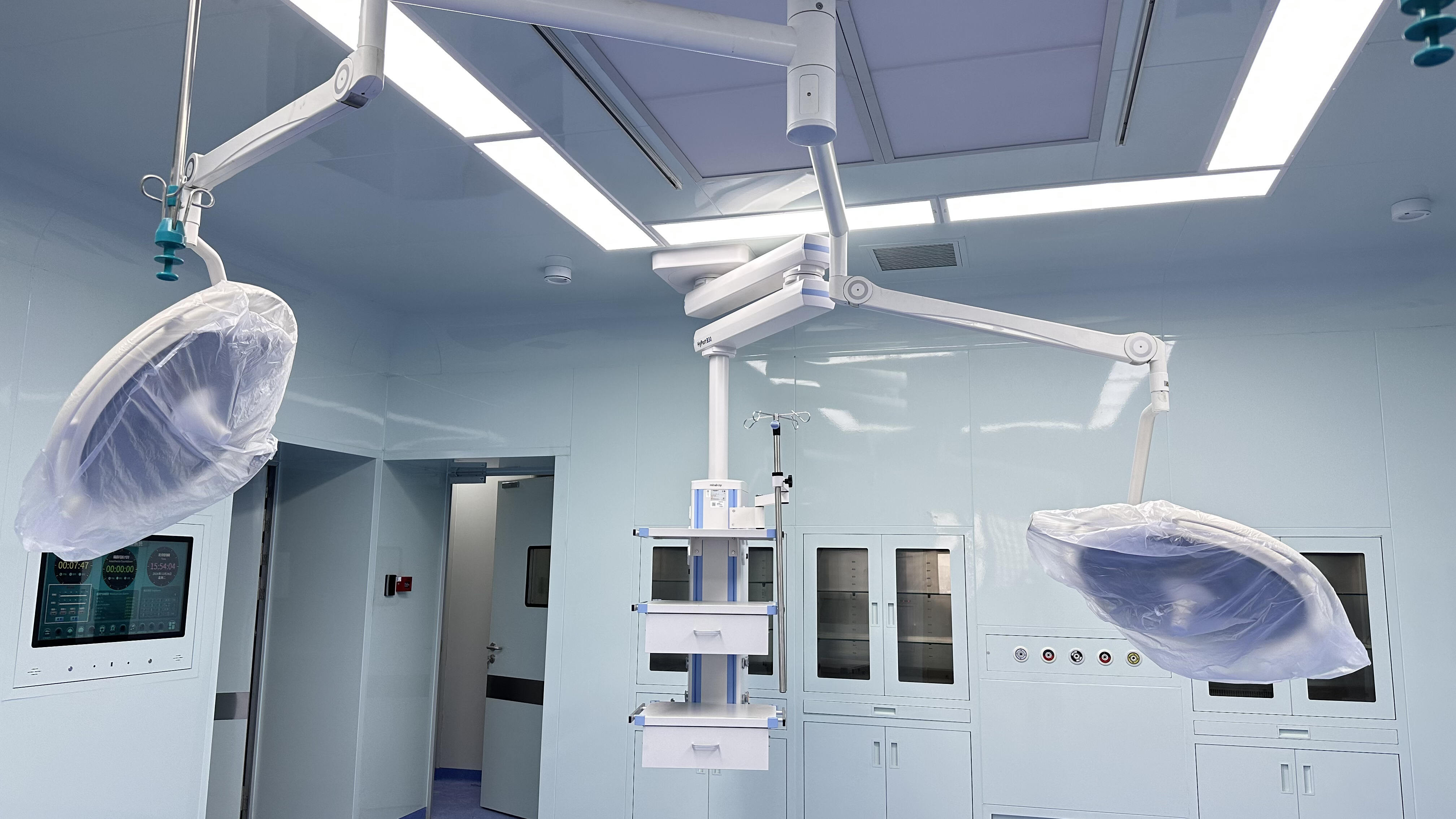
4. Future Development Trends
Future trends in prefabricated cleanroom engineering include:
-
Integration with BIM (Building Information Modeling) to optimize modular design
-
Adoption of robotic-assisted installation
-
Application of new materials such as antibacterial coatings and self-cleaning panels to enhance operating room environmental safety
-
Development of more flexible拼接 methods to meet the needs of hospitals of different scales
-
Gradual enhancement of modularity and scalability
